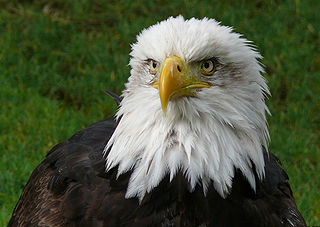Seeing More Clearly
Many people compare the eyesight of humans unfavorably to that of other animals, but actually we are quite visual animals with the excellent eyesight that reflects this. True, we cannot see small objects from great distances like the Peregrine Falcon, we do not have the huge visual field of the owl, we do not have the hair trigger motion detection of the cat, we cannot see in two directions like the deer, we do not have the excellent low light vision of the fox, and we cannot discern the wide color spectrum of the parrot. What we do have is highly acute adaptable vision suitable for a variety of purposes. We can see well at night in low levels of light, yet our diurnal vision can detect a variety of color. We excel at tasks requiring close vision, yet we can focus on objects miles away. Our ability to detect motion, while not rivaling that of the cat, is something we rely upon. It is instinctive and natural for us to have a clear visual mapping of our surroundings at all times. In short, though we can take no prizes in any particular aspect of vision, we are competent in a variety of areas, which is in itself remarkable.The core belief of natural vision is that it is natural for humans to have good vision, and poor vision occurs not through the passage of time or any particular activity, but through disease and, especially, poor vision habits. Poor vision is usually an acquired trait that requires practice. Improving eyesight occurs through understanding and utilizing good vision habits – not, as commonly believed, by practicing “eye exercises” a certain number of minutes per day. As one vision teacher explained to me, “I expect my students to practice no more and no less than twenty-four hours a day.”When I first began exploring natural vision, I was advised that “The most important thing you can do is to throw away your glasses.” I was horrified. The Department of Motor Vehicles had decreed that I needed glasses in order to drive legally, and I wondered how I could negotiate a long list of situations without sharp vision. “Throw away your glasses in order to throw away your glasses” – like so much of natural vision it seemed counterintuitive. I had expected my eyesight to gradually improve, and in the course of this improvement to gradually dispose of my lenses or gradually lower the strength of the prescription.I was unable to stop wearing glasses entirely right away, but I did begin driving less and using my lenses only in situations where they were essential (which turned out to be less frequently than I expected). I did nothing else at first to correct my vision, and I would estimate that it improved 80% over the course of a year or two through this step alone. In hindsight I understand that this was not entirely due to my eyes readjusting to focusing on their own. There were deeper psychological changes occurring that were also changing my perception. We see with our mind as well as our eyes. For one thing, I let go of the idea that my glasses were an essential part of me. I also became comfortable with the fact that vision is not static: it is clearer some days and foggier others. I let go of the idea that I must have sharp vision at all times, and paradoxically letting go of that need sharpened my vision. Most importantly, I stopped expecting my vision to naturally deteriorate with time and began trusting my eyes to continue serving me.In future posts on this topic I will describe some key insights of good visual habits and how they apply to divination and inner vision. In the meantime, consider the implications of the idea that letting go of the need to see sharpens the vision.

